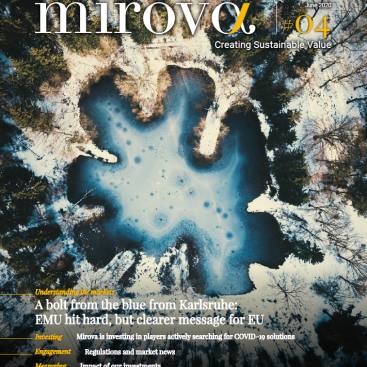Ideas

More than ever, green bonds are the focus of attention and the curiosity they are arousing is equalled by the questions they have raised. These instruments, which are geared towards "green" projects, have emerged as a market segment of their own at a time when questions about the integrity and sustainability of investments are becoming increasingly pressing.
Understanding the markets, Investing, Engaging in dialogues, Measuring Impact... Read the new issue of Mirovα: Creating Sustainable Value
Understanding the markets, Investing, Engaging in dialogues, Measuring Impact... Read the new issue of Mirovα: Creating Sustainable Value

The COVID-19 pandemic is a wake-up call for many. It is at last time for everyone to consider the effects and benefits of nature-based solutions on our planet and global population. Whilst we sometimes live in a world where words speak louder than actions, it is a great privilege to present results and alternative solutions at work in our 2019 Impact Report on Natural Capital Investing.

Understanding the markets, Investing, Engaging in dialogues, Measuring Impact... Read the new issue of Mirovα: Creating Sustainable Value

This is a methodological document aimed at clarifying how Mirova takes into account sustainable development issues in the framework of the environmental, social and governance analysis of each sub-sector of activity.

Understanding the markets, Investing, Engaging in dialogues, Measuring Impact... Read the new issue of Mirovα: Creating Sustainable Value

The way investors allocate capital can and will make a difference in meeting global sustainability challenges and succeeding in the energy transition. We encourage investors to avoid overreliance on a single scenario or emissions pathway, so our method emphasizes and supports the multitude of potential pathways to 2°C, free from pre-defined sectoral allocations. It is applicable across all asset classes, versatile, and scalable, with many potential applications within the investment process. The outcome is a simple-to-interpret indicator – climate change trajectory in °C – consistent with qualitative analysis.
